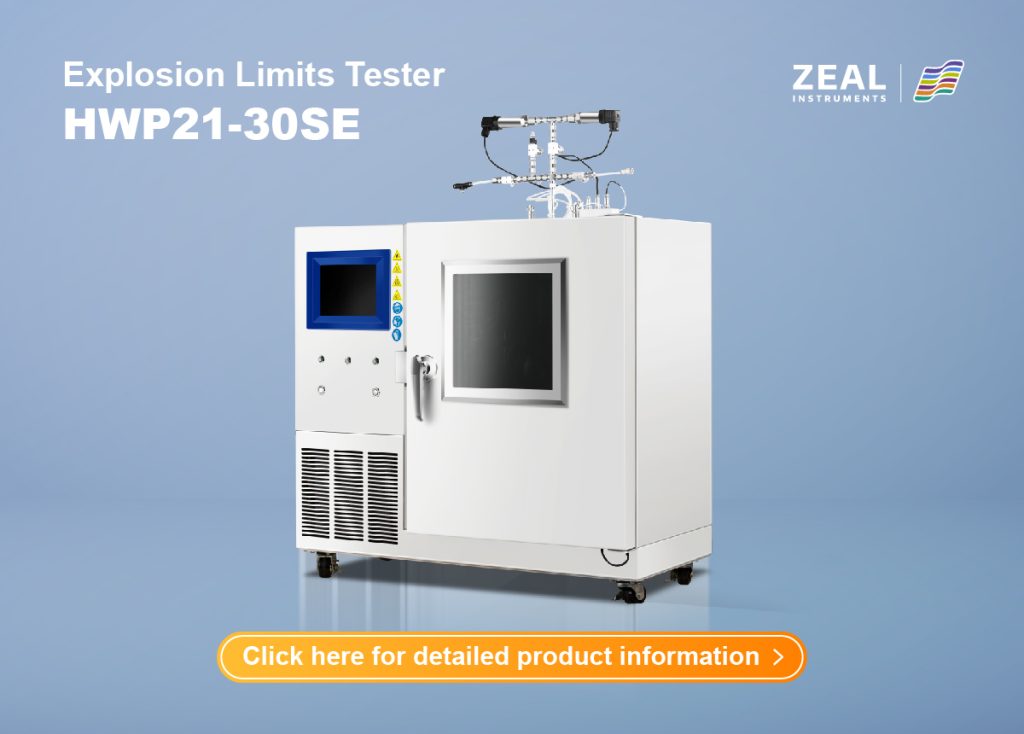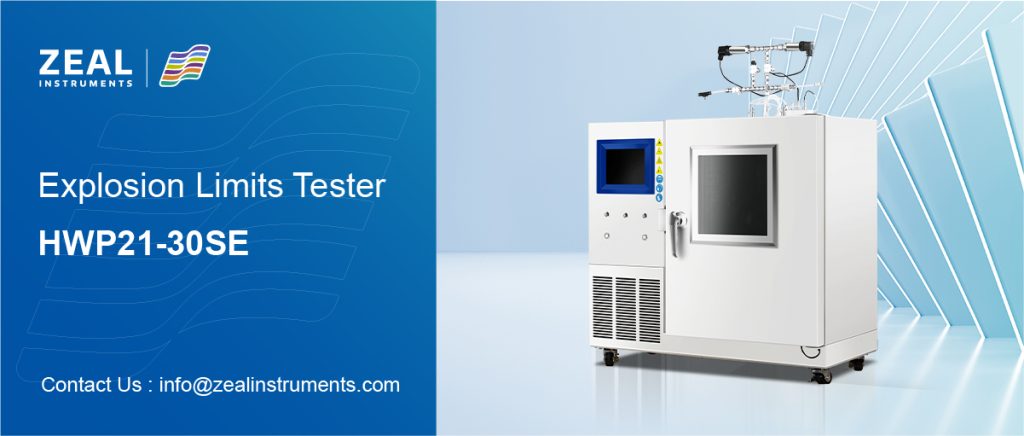Flammability Limits Tester For Limits Assessment
Are you aware that over 70% of industrial accidents involving flammable gases are due to improper assessment of explosive limits? Ensuring safety in environments dealing with combustible gases is crucial. The Flammability Limits Tester provides precise measurement of gas concentration ranges, determining safe operational limits to prevent explosions. An accurate assessment with our tester can prevent dangerous scenarios and protect both personnel and equipment. How confident are you in your current flammability assessments? Upgrade to our Flammability Limits Tester and ensure your safety protocols meet the highest standards.

Definition of Gas Flammable Limits
Explosive Limits Defined
A mixture of combustible gas (vapor) and air does not explode at any concentration when exposed to an ignition source; it must be within a specific concentration range to cause an explosion. This concentration range, where the gas can explode when exposed to an ignition source, is called the explosive limit of the combustible gas, including the lower explosive limit (LEL) and the upper explosive limit (UEL).
Variation Among Gases
Different combustible gases (vapors) have different explosive limits. For example, hydrogen has an explosive limit of 4.0% to 75.6% (volume concentration), meaning hydrogen will explode if its volume concentration in air is between 4.0% and 75.6%. If the hydrogen concentration is less than 4.0% or more than 75.6%, it will not explode even if there is an ignition source.
Methane Example
Methane has an explosive limit of 5.0% to 15%, meaning methane will explode when its volume concentration in air is between 5.0% and 15%; otherwise, it will not explode. This demonstrates the critical importance of knowing the specific explosive limits for different gases to ensure safety in environments where combustible gases are present.
Significance of Testing Gas Flammable Limits
Assessing Explosion Risk
Testing the flammable limits of gases is crucial for assessing the explosion risk associated with combustible gases, vapors, and dust. By understanding the specific explosive limits, industries can classify these substances accurately and determine their fire hazard category. This information is vital for developing safety protocols and ensuring compliance with regulatory standards, reducing the likelihood of catastrophic incidents.
Basis for Design and Engineering
Knowledge of gas flammable limits is essential for various design purposes. For instance, determining the fire resistance level of buildings and designing effective ventilation systems in factories depends on accurate data about the explosive limits of gases present. Engineers use this information to create safer work environments, ensuring that facilities are equipped to handle the specific risks associated with combustible gases and vapors.
Formulating Safe Operating Procedures
Testing gas flammable limits is fundamental in formulating safe production operating procedures. In environments where combustible gases, vapors, or dust are produced, used, or stored, maintaining concentrations below the lower explosive limit (LEL) is critical to prevent fire and explosion accidents. Safety measures such as proper ventilation, gas replacement, inert gas dilution, and the installation of detection and alarm systems are implemented based on the identified explosive limits and the associated risks. This proactive approach ensures a safer working environment by minimizing the potential for hazardous incidents.

Instrument Recommendation
Professional Testing Instrument
The HWP21-30SE is a professional test instrument designed for assessing the combustion hazards of gas or flammable vapor. It accurately determines the upper flammability limit (UFL) and lower flammability limit (LFL) of flammable mixtures formed by gas or vapor and air under standard atmospheric pressure and set temperatures. The results provide crucial data for fire risk assessments.
Versatile and Safe Design
This instrument features optional 5L and 12L round glass test vessels, ensuring sufficient gas mixing and compatibility. Safety is enhanced with explosive pressure relief devices, including a pressure relief door and spring-loaded compression device. The compact design integrates heating and cooling, with a built-in air circulation system for uniform and stable temperature control.
Advanced Detection and Monitoring
Equipped with a combination of pressure sensors and thermocouples, the HWP21-30SE detects sample states and automatically monitors and records environmental parameters like temperature, humidity, and atmospheric pressure. High-precision pressure sensors allow for precise control of gas pressure ratio concentration, while magnetic stirring and remote start control ensure accurate ignition.
Automated and Easy to Use
The HWP21-30SE supports fully automated testing processes, including parameter setting, data storage, and report viewing. It features automatic cleaning of the container and combustion products, a bottle brush for cleaning the bottle walls, and a video monitoring system for recording and observing test results. Safety is guaranteed with a double-layer toughened glass observation window and a back pressure relief door.
Specifications and Standards
Operating in environments from -5°C to 45°C with humidity levels below 95%RH, the HWP21-30SE tests gases, vaporizable liquids, or solids. It maintains temperature control from -10°C to 210°C with high accuracy and measures pressure and ambient conditions precisely. Complying with standards GB/T 21844 and ASTM E681-2009, this instrument is a reliable tool for combustion hazard assessment.
Further Expansion: Factors Affecting Gas Flammable Limits
Type and Chemical Properties of the Combustible Gas
The type and chemical properties of the combustible gas significantly influence its explosive limits. Different gases have varying reactivity and flammability characteristics, which determine their specific lower and upper explosive limits (LEL and UEL). For instance, hydrogen is more reactive and has broader explosive limits compared to methane.
Concentration of the Combustible Gas
The concentration of the combustible gas in the air mixture is crucial. The gas must be within a specific concentration range to ignite. Concentrations below the lower explosive limit (LEL) are too lean to burn, while those above the upper explosive limit (UEL) are too rich to ignite. Maintaining gas concentrations within safe limits is essential to prevent explosions.
Homogeneity of the Gas and Air Mixture
The uniformity of the gas and air mixture affects its explosiveness. A homogeneous mixture ensures that the combustible gas is evenly distributed, making it more likely to ignite uniformly. In contrast, heterogeneous mixtures may have localized concentrations of gas that can lead to uneven ignition and unpredictable explosion behavior.
Form, Energy, and Location of the Ignition Source
The form, energy, and location of the ignition source play a pivotal role in determining the explosiveness of a gas mixture. Ignition sources with higher energy, such as sparks or open flames, are more likely to ignite a gas mixture. Additionally, the position of the ignition source relative to the gas concentration can impact the explosion’s intensity and spread.
Geometric Shape and Size of the Explosion Container
The shape and size of the container where the gas mixture is held influence the explosion dynamics. Containers with complex geometries or confined spaces can increase the pressure and intensity of an explosion. Larger containers may allow for more significant dispersion of the gas, potentially reducing the likelihood of ignition.
Temperature, Pressure, and Humidity of the Gas and Air Mixture
Environmental conditions such as temperature, pressure, and humidity affect the explosive limits of a gas mixture. Higher temperatures can lower the LEL, making the gas more prone to ignition. Increased pressure can also enhance the mixture’s explosiveness. Humidity levels can influence the gas’s behavior, with higher humidity potentially reducing the mixture’s flammability.
Final Thoughts
The HWP21-30SE Flammability Limits Tester is a crucial tool for accurately evaluating the combustion hazards of gases and vapors. It determines both the upper and lower flammability limits under controlled conditions, delivering vital data for fire risk assessments and enhancing safety in industrial settings. Featuring advanced detection and monitoring technology, a versatile design, and fully automated processes, the HWP21-30SE ensures reliable and precise measurements. Its adherence to international standards highlights its effectiveness and reliability. Investing in this tester improves safety protocols and helps prevent major incidents by providing essential information for designing safer facilities and implementing effective operational procedures.






































